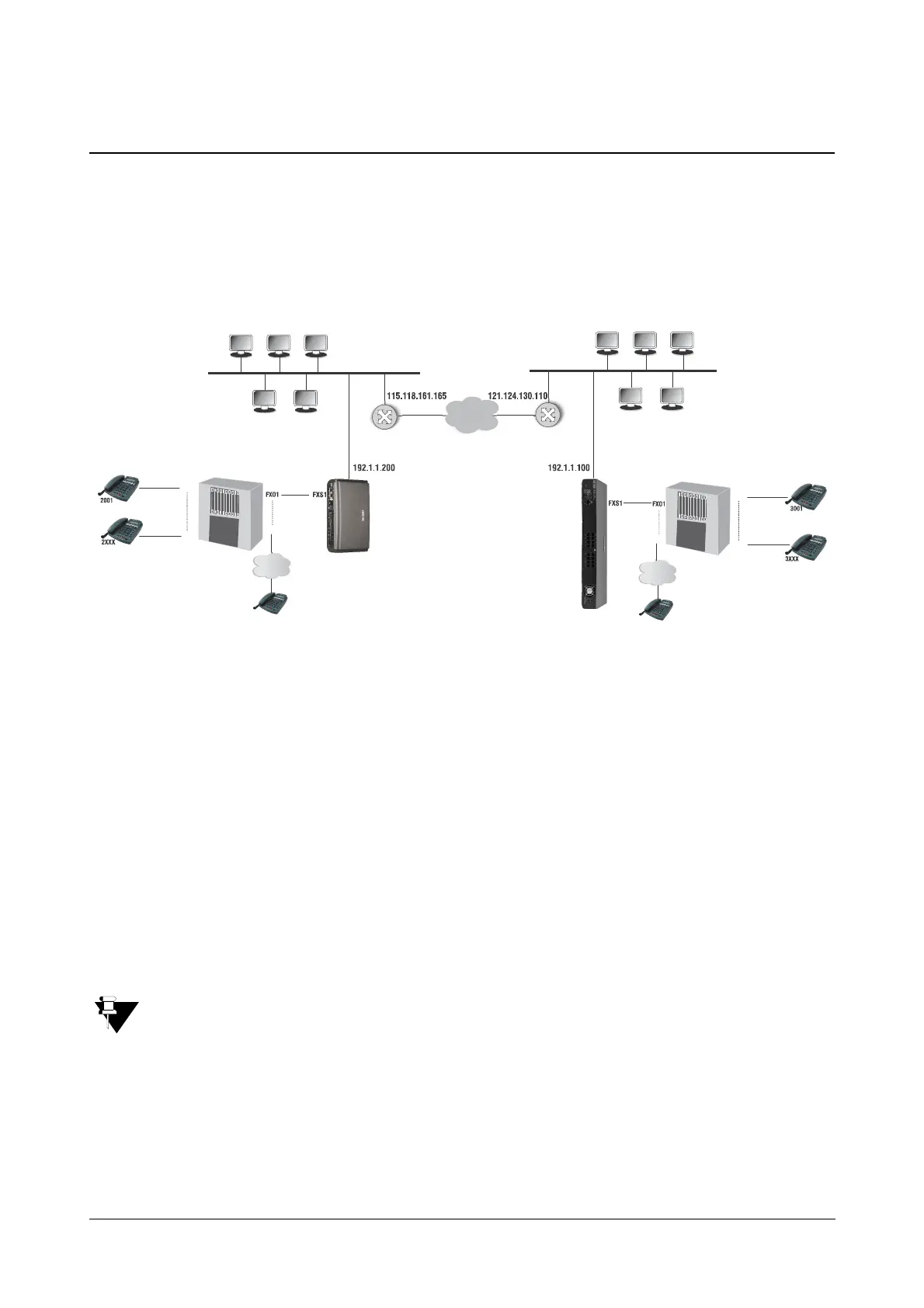Matrix SETU VFXTH System Manual 162
Peer to Peer Dialing
Making an IP call without the intervention of a proxy server is called Peer-to-Peer Calling. As Peer-to-Peer calling
does not require a proxy server, voice communication using this application can be done virtually free of cost. The
major cost savings offered by this application makes it a very attractive mode of inter-branch or intra-office voice
communication.
Let us understand how to use Peer-to-Peer Calling with the following illustration:
• Two offices are connected to the IP network.
• At Location A, a PBX (PBX A) and a Gateway (SETU VFX) is installed as shown above.
• SETU VFXTH is installed at Location B.
• Peer-to-Peer calls can be made between the two locations with suitable configuration of SETU VFXTH and
the Gateway (SETU VFX).
•At Location A, you need to do the following configuration in SETU VFX:
• Select a SIP Trunk to be used for this application and enable it. For example, SIP Trunk 1.
• Set the SIP Trunk Mode of this trunk as Peer-to-Peer.
• Keep the SIP ID of the SIP Trunk blank.
In the Router, you must configure the same SIP and RTP Ports as configured in the SETU VFX. In other
words, you must configure Port Forwarding for SIP and RTP on the Router.
• By default, Allowed IP Address for Incoming SIP Message is set to As per Peer to Peer table. In
the Peer to Peer table at Location A, you must configure the IP Address of the Router at Location B.
• Under Handling of Incoming Calls on the SIP Trunk, set the Incoming Call Routing option as Route
all incoming calls (with CLI) - to the Called Party Number.
Network
PBX - B
FXOn
SETU VFX
WAN
PBX - A
FXS1
FXSn
FXOn
PSTN
Caller A
2654515
Location A
PSTN
Caller B
